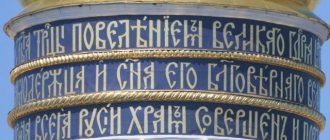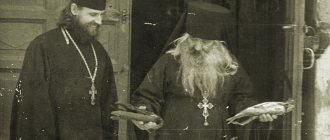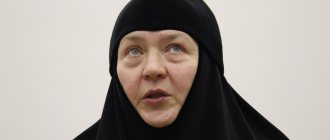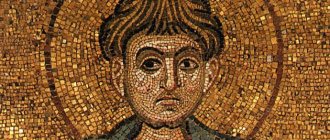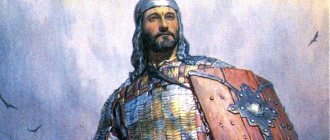Tsarevich Dmitry Ivanovich, Prince Uglitsky (1582-1591) is the youngest son of the Russian Tsar Ivan IV the Terrible and his seventh wife Maria Nagaya (Princess Uglitsky). The early and mysterious death of Dmitry Ioannovich later led to the emergence of a large number of impostors who pretended to be him and became one of the causes of unrest in the Moscow state. He is a saint in the Russian Orthodox Church.
Tsarevich Dmitry. Painting by Mikhail Nesterov, 1899.
Why did Tsarevich Dmitry become the last representative of the Rurik dynasty?
Born on October 19, 1582 in Moscow. He was the youngest of four sons of the Russian Tsar Ivan IV the Terrible. Two of his older brothers and sisters died before he was born. His other brother Dmitry drowned in the river, and Ivan was destined to be killed during a family quarrel by his own father.
When father Ivan the Terrible died, Fedor took his throne. He was not very smart, and according to some historians, there is evidence that he had prerequisites for mental illness.
Interestingly, according to foreign ambassadors, the boy turned out to have the same character as his father. He spoke badly about Godunov and many boyars.
For example, one day he came up with something that seemed like a children's game. He ordered snowmen to be made, each of which he gave the names of famous boyars. Then he chopped off the snowmen's heads with his saber, voicing that he would do the same with the boyars when he sat on the Russian throne.
Boris Godunov ruled on behalf of Dmitry. He did not do this, of course, disinterestedly. Boris Godunov hoped that in the event of the death of Fedor, who had no heir, he himself would become king. Only the little Tsarevich Dmitry stood in his way. Preserving his life was extremely important, because in that situation he remained the last person who could support the rule of the Rurik dynasty.
Princely chambers in the Uglich Kremlin, where Dmitry lived with his mother
Church on Blood
Today, at the site of the death of Tsarevich Dimitri, the Church “on the Blood” stands. Her altar is located above the place of death of the prince. Blood symbolizes the red color of the walls. The temple itself is a “ship” composition, beloved by Russian architects. If you look at the church from the river, it seems as if it is growing out of the water (it was placed so close to the shore edge). It should be noted that this “ship” is not mournful at all, but festive and joyful. Russian pattern design is generally life-affirming: rich brick decor, white details on a red background, a tented mast-bell tower, slender five-domed structure and blue domes with stars. Everything is bright and cheerful - what does the death of a child have to do with it? But then we enter the temple, go up the stairs, through the porch we get into the refectory, from there we go into the quadrangle and see the paintings. The entire western wall is dedicated to the death of Demetrius and the events that followed. It is written in whole compositions how the prince went for a walk from the palace, how two men approached him, one of them was holding a child, the other cut his throat, then the queen and her servants discovered the body of the dead prince, how the bell rang, an uprising arose and the killers themselves were killed “with stones by the Uglitsky people.” At the top of the wall is the central composition of the transfer of the body to Moscow. So was there a murder?
When and how did the prince die?
Already in May 1584, after the death of his father, Dmitry Ivanovich was exiled with his mother to Uglich by decision of the Regency Council. He was only 1.5 years old then. There he died at the age of 8 under unclear circumstances.
Contrary to long-standing tradition, he was sent by his brother Fedor to his inheritance in Uglich. His maternal relatives from the Nagikh family were also deported with him. Moreover, neither Dmitry Ivanovich nor his relatives had real power in Uglich, which was concentrated in the hands of the tsar’s governors (first clerk A. Vlasyev, later N. Bityagovsky).
According to the testimony of people from the entourage of Tsarevich Dimitri Uglitsky, he suffered from “falling illness” (epilepsy). Moreover, the prince’s mother, Maria, accused clerk Bityagovskaya of deliberately keeping a holy fool at court, who provoked epileptic attacks in Dmitry Ivanovich. Also at this time, rumors were spreading that among the Moscow nobility there was a group of conspirators who planned to poison Tsarevich Dmitry. The leader of the rebellion was called the future Tsar Boris Godunov.
Soon after the death of the prince, a state commission under the leadership of Prince Vasily Shuisky arrived in Uglich. She interviewed dozens of witnesses and came to the conclusion that it was an accident and the prince himself could have inflicted a wound on himself with scissors during an attack of epilepsy. However, this did not stop investigators from punishing those responsible for the death of the prince - in particular, his mother was tonsured as a nun, some townspeople were executed, about 200 people were thrown into prison, and the Nagikh family was sent into exile in Siberia.
This event led to a completely new situation in Russian politics, for which no one was prepared. The mysterious death of Dmitry, which interrupted the continuity of the Rurik dynasty, is considered one of the key events that led to the advent of the great turmoil.
Monument to the Tsarevich in the Uglich Kremlin
Too many wives
Ivan the Terrible had many wives, and historians are still arguing how to count them, in particular, who can be called full-fledged spouses and who cannot. No matter how many there were, 6, 7 or 8, the last one was Maria Nagaya.
From the point of view of Orthodoxy, Maria Nagaya could not be considered a legitimate queen - even 8 years before marrying her, Ivan the Terrible had exhausted the limit. Canon law allowed only 3 marriages. The fourth wedding of the tsar (in 1572 he entered into an alliance with Anna Koltovskaya) was an exception made in the interests of the state. In order for the church to give permission, it was necessary to convene a council, at which the autocrat proved that his third wife Marfa Sobakina was not his wife in the full sense. Sobakina, in fact, got married when she was already seriously ill and died soon after the wedding. Ivan the Terrible convinced the council that the marriage was not consummated - this helped to obtain permission for a new marriage.
There could not even be any talk of permission for a fifth, sixth or seventh marriage. So Maria Nagaya was either the unmarried wife of Ivan the Terrible, or married, but illegally. From the point of view of marriage or childbearing itself, this did not matter, which cannot be said about politics. After the death of Ivan the Terrible, Maria Nagaya could not be considered a dowager queen. Moreover, the question arose about the legality of the rights to the throne of their son, the notorious Tsarevich Dmitry.
What historical versions of the death of Tsarevich Dmitry exist?
According to the official version, the young man had a seizure on May 15, 1591. Most likely, he stabbed himself with a knife (a deadly sharp instrument) while playing with friends when he suffered an epileptic attack. Today we do not know what the truth was, but doubts around the death of the prince began to grow almost immediately. After all, the official version of the event seemed “sewn with white thread,” and its main beneficiary turned out to be Boris Godunov. When natural political disasters and unrest struck the country a few years later, various “conspiracy theories” began to emerge among ordinary Russians.
According to the Tsar's doctors, Tsarevich Dmitry's hands were relaxed during an attack of epilepsy. Most likely, he would not be able to hold a pile or a knife in his hands in this state. Most likely, he fell in a fit right on a knife blade or something sharp. Perhaps he injured himself while trying to pull the knife from under the body of Dmitry, who was in convulsions. Maria Nagaya, who came running in response to the noise, accused Dmitry’s friends of murder.
The nanny of little Tsarevich Dmitry recalled how, during one of the attacks that had happened earlier, he pricked and scratched his mother, and during another attack he bit the girl’s hand.
According to one of the many versions of the explanation for Dmitry's death, his mother, wanting to avoid accusations of insufficient care for the child, announced the murder of Tsarevich Dmitry on the orders of the tsar's favorite Boris Godunov.
There were many causes of death. Many people were accused of this murder, including a Uglich doctor of Polish origin, which was supposed to make it easier for Poland later to install the impostor Dmitry on the Moscow throne.
The rumor spread in subsequent years and was that the deceased was not Tsarevich Dmitry at all. He was believed to have fled persecution and was in hiding for an extended period (possibly in Poland). Seven years later, these rumors came to life again when Tsar Fedor died. Boris Godunov, Ivan's adviser and de facto ruler during Fedor's reign, ascended the throne.
After the end of the Time of Troubles, historian Nikolai Karamzin put forward a new version. In his opinion, the death of the prince was a contract killing from Godunov. But the disadvantage of this version is that it would be stupid to commit a possible contract killing in a crowded place with the involvement of other children. As a rule, at that time the main weapon for eliminating the royal heirs was poisons.
Little sick
Regardless of the existence of the “ugly woman,” Dmitry Ivanovich really suffered from epilepsy, or “black sickness,” as this disease was called in those days. The seizures were equally dangerous for the young prince and for those around him. The details came to us thanks to the investigation of the Shuisky Commission.
According to relatives and servants, the illness lasted “for months at a time without ceasing.” Shortly before Easter 1591, the prince “ate the hands of Ondreev’s daughter Nagov, and two were born.” Andrei Nagoy confirmed both this case and the fact that the child regularly “ate the hands” of residents and bed-women.
However, chronic illness did not prevent the prince from playing outdoor games. And here character traits reminiscent of his father were already evident. The prince and the courtyard children sculpted snow boobies - women, called them by the names of the offending boyars, after which they chopped off their heads or quartered them.
Icon "Tsarevich Demetrius of Uglich in his life." (Wikimedia Commons)
According to the English diplomat Giles Fletcher, author of the book “On the Russian State,” the prince was repeatedly present at the slaughter of livestock and himself beat chickens and geese to death with a stick. However, some of Fletcher's statements do not pass documentary verification. Thus, he assured that the nurse, who tasted the food before the child, died immediately. In fact, the nurse Anna Tuchkova outlived her ward.
By May 1591 the following situation had developed. On the one hand, Boris Godunov finally won the fight for the right to be the sole guardian-ruler under the weak Tsar Fedor. Some of his well-born rivals voluntarily entered a monastery, others were forcibly tonsured, and simpler people were sent to the chopping block.
However, Godunov’s sovereignty could end any day with the death of the sickly and childless Fyodor Ioannovich. Tsarina Irina (Boris Godunov’s sister) was unable to give birth to an heir. And without him it was impossible to dream of maintaining guardianship over the dynasty. The most realistic and dangerous contender lived in Uglich, and Boris knew that the snowy idiot named after him was executed more often than others.
Why did Tsarevich Dmitry become revered as a saint in the Russian Orthodox Church?
In 1606 he was buried. Dmitry's remains were transferred to Moscow, in particular, in order to ultimately prove the fact of his death. Dmitry Uglitsky was canonized by the Russian Orthodox Church as a passion-bearer and is revered as a saint.
The reason for canonization was the incorruptibility of the relics and the miracles of healing of the sick at Dmitry’s grave. In particular, he is revered as the patron saint of sick children. There are numerous cases of their healings attributed to the intercession of Saint Demetrius.
At the end of the same year, German Tulupov created the first life of the saint.
In 1997, the Church Order of Blessed Tsarevich Dmitry was established, which is awarded for “deeds of mercy.”

